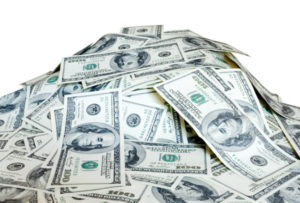 In its latest report on U.S. household debt and credit, the Federal Reserve Bank of New York found that there”™s plenty of economic activity to keep banks busy lending and processing debt and credit card payments.
In its latest report on U.S. household debt and credit, the Federal Reserve Bank of New York found that there”™s plenty of economic activity to keep banks busy lending and processing debt and credit card payments.
“2020 ended with a substantial increase in new extensions of credit, driven by record highs of new mortgages and auto loan originations,” said Wilbert Van Der Klaauw, senior vice president at the New York Fed. “Notably, the overall median mortgage origination credit scores jumped up, reflecting a high share of refinances.”
The report released on Feb. 17 by the Fed”™s Center for Microeconomic Data relied on figures from the Fed”™s Consumer Credit Panel, which drew in part on material from the consumer credit firm Equifax.
The report said that debt increased by $206 billion to $14.56 trillion in the fourth quarter of 2020, driven in part by a steep increase in mortgage originations. The total debt balance ended 2020 $414 billion higher than it was in 2019.
Mortgage balances, representing the largest component of household debt, increased by $182 billion in the fourth quarter of 2020 to $10.04 trillion at the end of December.
An analysis by Fed researchers noted that mortgage refinances tend to go to higher credit-score borrowers compared with purchase mortgages. This is because those who are refinancing already have a mortgage that they”™ve been repaying for some time and are building their credit history. The analysis stated, “Thus, this high volume of superprime mortgage originations suggests we are in the midst of another refinance boom.”
While credit card balances increased by $12 billion over the quarter, they were $108 billion lower than they had been at the end of 2019, the largest year-over-year decline since these reports by the New York Fed began in 1999. The Fed said that the overall decline is consistent with continued weakness in consumer spending and revolving balance paydowns by card holders.
Debts not related to housing increased by $37 billion during the fourth quarter of 2020 but still remained below where they had been at the end of 2019.
Outstanding student loan debt stood at $1.56 trillion in the fourth quarter, a $9 billion increase from the third quarter. About 6.5% of aggregate student debt was more than 90 days delinquent or in default in the fourth quarter of 2020.
As of late December, the share of outstanding debt that was in some stage of delinquency was 1.6 percentage points lower than the rate observed at the end of 2019 before the Covid-19 pandemic hit the U.S. About 121,000 consumers had a bankruptcy notation added to their credit reports, a decline from the previous quarter and a new 20-year low.
The share of federal student loans and federally backed mortgages transitioning into delinquency both continued to fall, as a result of provisions in the federal government”™s Covid-relief CARES Act designed to protect those facing foreclosure or loan collection during the pandemic.
Balances on home equity lines of credit (HELOC) saw a $13 billion decline, the 16th consecutive decrease since the fourth quarter of 2016, bringing the outstanding balance to $349 billion.
A separate survey by the New York Fed of consumer expectations found people believe it was easier to obtain credit in January 2021 than it was in January 2020. Expectations about future credit availability improved as well, with more respondents expecting it will be easier to obtain credit in the year ahead.
The expectations survey found that slightly more people felt that interest rates on savings accounts will be higher in January of 2022 than they were in January 2021. There also was a perception that stock prices will be higher in January 2022 than in January 2021.
A TD Economics report from TD Bank Group showed that personal income surged by 10% in January, on par with market expectations. The report largely attributed the strength to the increase in social benefits from federal economic stimulus checks and expanded unemployment insurance benefits from the Covid-relief act enacted at the end of 2020.
The TD Economics report said subtracting inflation and taxes, real disposable income rose by 11% on the month and 13.3% year over year. Personal spending rose by 2.4% in January, a hair below the 2.5% most observers had expected. Spending growth was led by goods, up 5.8%, with services up 0.7%. The increase in goods spending was broad-based with recreational goods and vehicles leading the way. In services, gains were led by food services and accommodation, with travel and tourism having been among the most battered areas during the pandemic.
The TD Economics report found that rising income pushed the personal savings rate up to 20% last month, the level last seen in June 2020. The total amount of savings above the pre-pandemic level is now $2.5 trillion.
TD Economics said that with solid growth in personal income and spending, concerns over inflation have reached a fever pitch. Its report doesn”™t point to inflation spiraling out of control but rather quotes Fed Chairman Jerome Powell as describing inflation as “soft” and reaffirming that it will not dissuade the Fed from continuing to support the economy.
TD Economics concluded that the economic outlook is increasingly upbeat and that consumers are encouraged by the rollout of vaccines and their encouragement is reflected in their spending.



















